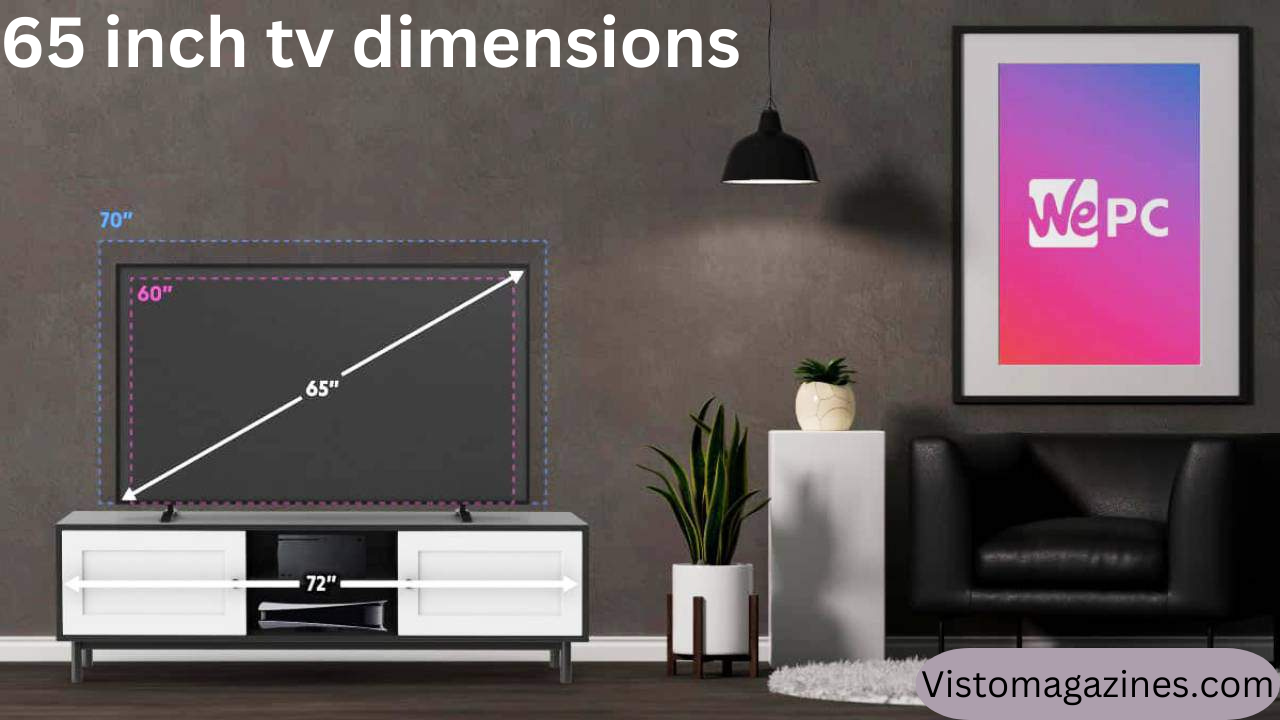Understanding 65 Inch TV Dimensions: A Comprehensive Guide
When purchasing a TV, one of the most important aspects to consider is the screen size. A 65-inch TV is a popular choice for many households, offering a large and immersive viewing experience. However, when discussing the dimensions of a 65-inch TV, it’s essential to understand several key factors beyond just the screen size. In this article, we’ll dive deep into the various dimensions of a 65-inch TV, including the physical size, the screen aspect ratio, and how the overall dimensions impact your space and viewing experience.
What is Meant by a “65-Inch TV”?
Before delving into the specifics of 65-inch TV dimensions, it’s important to clarify how TV size is measured. When manufacturers label a TV as 65 inches, they are referring to the diagonal measurement of the screen. This measurement is taken from one corner of the screen to the opposite corner (typically from the bottom-left corner to the top-right corner or vice versa). It is important to note that this measurement only reflects the screen size and does not account for the bezel, stand, or any additional elements around the screen.
Dimensions of a 65-Inch TV Screen: Height, Width, and Depth
While the screen size of a TV is the most well-known metric, understanding the height, width, and depth of the TV is equally important, especially when determining how it will fit into your living space.
Screen Width
For a 65-inch TV, the screen width typically measures between 56 to 57 inches. The exact width may vary slightly depending on the TV model and brand. This width measurement is crucial because it gives you an idea of how much horizontal space the TV will occupy when mounted on the wall or placed on a stand.
Screen Height
The height of a 65-inch TV usually ranges between 32 and 34 inches. The height will depend on the aspect ratio of the TV, which is generally 16:9 for most modern televisions. A 16:9 aspect ratio means that the height will be approximately half of the width, with a little variation depending on the bezel and other design features.
Screen Depth
The depth of a 65-inch TV varies greatly depending on whether it is an LED, OLED, or QLED model. Typically, LED TVs are the thinnest, with a depth ranging from 2 to 3 inches. OLED and QLED TVs can be slightly thicker but still typically stay under 3 inches in depth. However, the depth increases slightly when you factor in the TV’s base or stand. The depth of the entire unit (including the stand) could range from 12 to 15 inches.
TV Bezel Size
While the screen size is usually the most emphasized feature, the bezel (the frame surrounding the screen) is also a factor in determining the overall dimensions of the TV. Modern TVs often come with slim or ultra-thin bezels, which contribute to a sleek, minimalist look. However, some older models or budget-friendly options may have thicker bezels that slightly increase the overall size of the TV.
Aspect Ratio of a 65-Inch TV and Its Impact on Dimensions
The aspect ratio of a TV refers to the proportional relationship between its width and height. The most common aspect ratio for modern TVs is 16:9, which means that the screen is 16 units wide for every 9 units of height. For a 65-inch TV, this 16:9 aspect ratio affects the exact height and width measurements, which we previously discussed.
Most TVs on the market are built with a 16:9 aspect ratio, providing a wide-screen experience that is ideal for watching movies, playing games, and viewing sports. Understanding this aspect ratio is critical when determining how well a TV will fit into your living space, especially when considering mounting it on a wall or fitting it on a TV stand.
How to Calculate the Physical Dimensions of a 65-Inch TV
If you’re trying to calculate the physical dimensions of a 65-inch TV based on its diagonal screen size, you can use a simple formula to estimate the height and width. Here’s how you can calculate it:
- Diagonal Size (D) = 65 inches (in this case)
- Aspect Ratio = 16:9
The width-to-height ratio is 16:9, meaning the width is 16 units, and the height is 9 units. To calculate the exact width and height, we use the Pythagorean theorem, where:
- Width (W) = D * 16 / √(16² + 9²)
- Height (H) = D * 9 / √(16² + 9²)
Plugging in the numbers for a 65-inch TV:
- Width (W) = 65 * 16 / √(16² + 9²) = 65 * 16 / √(256 + 81) = 65 * 16 / √337 ≈ 65 * 16 / 18.357 ≈ 56.5 inches
- Height (H) = 65 * 9 / √(16² + 9²) = 65 * 9 / √337 ≈ 65 * 9 / 18.357 ≈ 31.7 inches
This gives us the approximate screen width of 56.5 inches and screen height of 31.7 inches for a 65-inch TV with a 16:9 aspect ratio.
The Impact of TV Stands and Mounting
One of the most important considerations when purchasing a 65-inch TV is how you will position it in your living room. TV stands and wall mounts play a significant role in how the TV fits into your space.
TV Stands
When placing a 65-inch TV on a stand, you will need to ensure that the stand is wide and sturdy enough to support the weight and dimensions of the TV. Most 65-inch TVs weigh between 45 to 75 pounds, depending on the model and whether it includes additional features like a built-in soundbar.
When selecting a TV stand, the width of the stand should typically exceed the width of the TV itself to ensure stability and prevent tipping. For a 65-inch TV, a stand that is at least 60 to 70 inches wide is ideal.
Wall Mounting
Mounting your TV on the wall can be an excellent space-saving solution, especially if you have limited floor space. When wall mounting a 65-inch TV, it’s crucial to select the right size and type of mount. VESA (Video Electronics Standards Association) mounting patterns are commonly used for this purpose, and many 65-inch TVs are compatible with VESA patterns ranging from 200x200mm to 600x400mm.
It’s also essential to consider the viewing height and angle when mounting your TV on the wall. For optimal viewing, the center of the screen should generally be at eye level when you are seated.
Choosing the Right Space for Your 65-Inch TV
Given the significant size of a 65-inch TV, selecting the right location for your new television is crucial. Here are a few tips to ensure that your TV fits perfectly in your space:
- Room Size: A 65-inch TV is ideal for larger living rooms or media rooms. If your room is too small, the TV may dominate the space and make viewing uncomfortable. A general rule of thumb is to sit at a distance of at least 8 to 10 feet from the screen for the best viewing experience.
- Viewing Angle: Make sure that your seating arrangement allows for a good viewing angle. The TV should be placed in such a way that everyone in the room has a clear, unobstructed view of the screen.
- Wall Mounting vs. TV Stand: Consider whether you want a more permanent setup with a wall-mounted TV or if you prefer the flexibility of a TV stand. Both options have their pros and cons, and the decision largely depends on your room layout and design preferences.
Conclusion
The dimensions of a 65-inch TV are crucial factors to consider when determining if this screen size is right for your living space. From understanding the height, width, and depth of the screen to factoring in the TV stand or mounting solution, there are many variables to account for. By being mindful of these dimensions and ensuring that the TV fits within your room’s space, you can create an immersive and enjoyable viewing experience. Whether you choose a traditional stand or opt for a sleek wall mount, the 65-inch TV is an excellent option for those looking for a large screen with a great picture quality.



